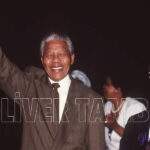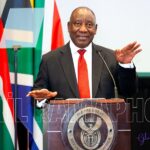Nelson Mandela: Journey of a Visionary Leader

Nelson Mandela, the iconic South African anti-apartheid revolutionary, political leader, and philanthropist, remains one of the most admired figures in modern history. His life journey exemplifies resilience, determination, and the power of hope in the face of adversity. From his humble beginnings in the rural village of Qunu to becoming the first democratically elected black president of South Africa, Mandela’s life was a remarkable narrative of struggle, sacrifice, and triumph.
In this comprehensive exploration of Nelson Mandela’s journey, we will delve into the significant milestones that shaped his legacy, including his early life, his role in the anti-apartheid movement, his imprisonment, and his presidency. His commitment to justice and equality has inspired millions across the world and serves as a testament to the enduring power of the human spirit.
The Early Life of Nelson Mandela: Roots in Rural South Africa
Nelson Rolihlahla Mandela was born on July 18, 1918, in the village of Mvezo, in the Eastern Cape province of South Africa. He was the son of Gadiyho Mandela, a chief of the Thembu people, and Noqaphi Nosekeni. His given name, Rolihlahla, means “pulling the branch of a tree,” symbolizing his ability to challenge authority and bring change.
Mandela’s family was part of the Thembu royal family, and though they lived in relative poverty, they had a respected position in their community. As a young boy, Mandela was exposed to traditional African customs and values. His early education at Clarkebury Boarding School and Healdtown further instilled in him a sense of justice and respect for others.
The death of his father when Mandela was only nine years old forced him to live under the guardianship of the Thembu regent, Chief Jongintaba Dalindyebo, at the Great Place in Umtata. This transition was significant, as it gave Mandela a glimpse into the world of politics and leadership. His exposure to leadership dynamics and the role of governance deeply influenced his future path.
The Formation of Political Ideals: A Fight for Equality
In 1939, Mandela enrolled at the University of Fort Hare, one of the few institutions that accepted black students in South Africa. It was during his time at university that Mandela began to formulate his political ideals. He became increasingly aware of the racial injustices that plagued South African society and started organizing protests against the university’s policies. His activism, however, led to his expulsion from Fort Hare in 1940.
Following his expulsion, Mandela moved to Johannesburg, where he worked as a law clerk and began his formal studies at the University of South Africa (UNISA). During this period, Mandela became more involved in the African National Congress (ANC), an organization founded in 1912 to fight against racial segregation. His work with the ANC marked the beginning of his lifelong commitment to social justice.
In 1944, Mandela, along with other like-minded individuals, co-founded the ANC Youth League, which became a driving force behind the national movement for racial equality. Mandela’s leadership within the league was instrumental in promoting the ANC’s objectives and encouraging younger generations to take part in the struggle for freedom.
The Anti-Apartheid Struggle: Defying a Brutal System
In 1948, the National Party came to power in South Africa, implementing the apartheid system of institutionalized racial segregation. Under apartheid, black South Africans were stripped of their rights, forced into segregated areas, and subjected to extreme violence. Mandela, now an active leader in the ANC, spearheaded efforts to challenge the regime.
Mandela’s commitment to non-violence and his belief in the freedom of all people led him to participate in defiance campaigns across the country. However, as the apartheid government became increasingly oppressive, Mandela’s tactics shifted. In 1961, after the Sharpeville Massacre, where police killed 69 unarmed protesters, Mandela and the ANC embraced armed resistance as a means of combating the regime.
Mandela became a leader of the Umkhonto we Sizwe (MK), the armed wing of the ANC. The MK conducted sabotage operations targeting government installations, communications, and transportation networks. Despite facing numerous obstacles, Mandela continued to push for economic sanctions and international isolation of the apartheid state.
Imprisonment: A Symbol of Resistance
In 1962, Mandela was arrested and convicted of leaving the country illegally and inciting strikes. He was sentenced to five years in prison, but his imprisonment was just the beginning of his long journey behind bars. In 1964, while in custody, he was convicted again, this time for sabotage and attempting to overthrow the government. He was sentenced to life imprisonment.
Mandela’s incarceration on Robben Island, where he endured brutal treatment and forced labor, became a symbol of resistance to apartheid. While in prison, Mandela continued his political work, communicating with his comrades through letters and encouraging the international community to put pressure on the apartheid regime. His imprisonment was a rallying point for anti-apartheid movements worldwide, and the Free Nelson Mandela campaign gained significant traction during the 1980s.
Despite the harsh conditions, Mandela’s resolve never wavered. He became a symbol of moral authority, embodying the spirit of justice, courage, and perseverance. His time on Robben Island, though physically grueling, solidified his place as one of the most important political figures in history.
The End of Apartheid: Negotiating Freedom and Forging Unity
After 27 years of imprisonment, Nelson Mandela was released on February 11, 1990. His release was a result of mounting international pressure on the apartheid government and internal unrest within South Africa. In the years that followed, Mandela played a pivotal role in dismantling apartheid and building a new, democratic South Africa.
Mandela was instrumental in negotiating with the ruling government to end apartheid peacefully. His leadership during the transition was crucial in preventing a civil war and ensuring that the process of reconciliation could begin. Mandela’s emphasis on forgiveness and national unity allowed South Africa to heal from the deep wounds inflicted by apartheid.
In 1994, Nelson Mandela became the first black president of South Africa, marking the dawn of a new era. His presidency was focused on nation-building, economic transformation, and racial reconciliation. Mandela’s vision of a “Rainbow Nation” sought to unite South Africans of all races and backgrounds into a peaceful and prosperous society.
Legacy: The Global Impact of Nelson Mandela
Nelson Mandela’s legacy transcends the borders of South Africa. His life serves as an example of the power of non-violence, unity, and the unyielding fight for justice. Mandela’s ability to bridge divides, forgive his enemies, and build a nation from the ashes of apartheid remains an inspiration for leaders and activists around the world.
Mandela’s influence can be seen in global movements advocating for human rights, social justice, and environmental sustainability. He received numerous accolades, including the Nobel Peace Prize in 1993, in recognition of his efforts to bring peace and reconciliation to South Africa.
Though Mandela passed away on December 5, 2013, at the age of 95, his impact continues to shape the future of South Africa and the world. His unwavering commitment to equality, justice, and the empowerment of all people serves as a guiding light for future generations.
Global Leaders View: A Legacy for the Ages
Nelson Mandela’s life journey is a story of immense courage and unshakable dedication to the ideals of freedom, justice, and human dignity. From his early years in rural South Africa to his time as a world-renowned leader, Mandela’s legacy will forever remain etched in history as a beacon of hope for those fighting against oppression and injustice.
His enduring impact serves as a reminder that even in the face of overwhelming adversity, one individual can change the course of history. Mandela’s journey is not just the story of a man—it is the story of a movement, a nation, and a world that dared to believe in the possibility of freedom and equality.
Also Read: Leaders View
Recent Posts
Related Articles
Milan Dordevic: Navigating Two Decades of Innovation and Leadership Internationally Across Industries
You’ve got to be serious at some things, at a particular age,...
ByGlobal Leaders ViewFebruary 5, 2025Yossi J Amuial: Steering the Course of Innovation and Excellence at Executive Tag & Title Svcs, Inc.
In the vast sea of leadership, true leaders emerge not by just...
ByGlobal Leaders ViewFebruary 5, 2025Lisa Anna Palmer: A Journey of Empowerment, Vision, and Impact
You can hate more but you can never love less. The hope...
ByGlobal Leaders ViewFebruary 5, 2025Krystn Macomber: From Athlete to Entrepreneur: The Journey of a Visionary CEO
Krystn Macomber knows winning. Going back to her days as a D1...
ByGlobal Leaders ViewFebruary 5, 2025















Leave a comment